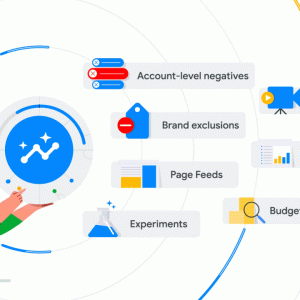
The world of marketing is a dynamic and ever-evolving landscape. Young marketers, brimming with fresh perspectives and digital prowess, are eager to prove their mettle. However, the path to marketing mastery is paved with challenges, and case studies are often the first stepping stones. While these simulated scenarios offer valuable learning opportunities, they can also expose some common pitfalls that can hinder young marketers’ performance.
This article delves into five key shortcomings young marketers frequently encounter when tackling marketing cases:
1. Lack of Market Research:
A common misstep is diving headfirst into crafting solutions without a thorough understanding of the market landscape. This includes neglecting research on the industry, target audience, competitors, and overall marketing context. Consequently, proposed strategies might lack grounding in reality, leading to ineffective campaigns and inaccurate conclusions.
Tips:
- Conduct in-depth research: Gather data from reliable sources like industry reports, competitor analyses, and consumer surveys.
- Understand the target audience: Delve into their demographics, psychographics, and pain points.
- Analyze the competitive landscape: Identify key competitors, their strengths and weaknesses, and their market positioning.
- Consider the broader marketing context: Take into account trends, regulations, and cultural factors that might influence the campaign.
2. Big Idea Disconnect from Insights:
While unearthing valuable consumer insights is crucial, some young marketers struggle to translate them into a compelling “Big Idea.” This could manifest as a Big Idea that is irrelevant to the insights, generic and uninspiring, or simply unclear in its articulation.
Tips:
- Focus on the “why” behind the insight: Understand the emotional drivers and motivations behind consumer behavior.
- Develop a Big Idea that resonates with the insight: Ensure it is relevant, meaningful, and emotionally connects with the target audience.
- Craft a clear and concise articulation of the Big Idea: Make it easy for others to understand its essence and impact.
- Test the Big Idea against the insights: Ensure it aligns with and amplifies the consumer understanding.
3. Overreliance on Trends and Tactics:
The allure of trendy marketing tactics can be tempting, but relying solely on them can overshadow the strategic core of a campaign. Young marketers might get caught up in implementing the latest buzzwords without considering their long-term effectiveness and alignment with the overall marketing objectives.
Tips:
- Prioritize strategy over tactics: Focus on developing a sound marketing strategy that drives the campaign towards its goals.
- Select tactics that align with the strategy and target audience: Don’t get swayed by trends that might not be relevant or effective.
- Understand the limitations of tactics: Recognize that tactics alone cannot guarantee success without a strong strategic foundation.
- Evaluate the effectiveness of tactics: Continuously monitor and measure their impact on the campaign’s performance.
4. Neglecting Measurable Results:
Passionate about creative ideas, young marketers might overlook the crucial aspect of measuring campaign results. Without clear metrics and evaluation frameworks, it’s difficult to assess the effectiveness of the proposed solutions and make data-driven decisions.
Tips:
- Define clear and measurable objectives: Align them with the overall marketing goals and target audience.
- Identify relevant metrics for each objective: Consider metrics like brand awareness, website traffic, conversion rates, and customer engagement.
- Develop a measurement plan: Outline how data will be collected, analyzed, and reported.
- Track and analyze results regularly: Use insights to refine the campaign and optimize performance.
5. Lack of Storytelling and Persuasion:
Marketing is ultimately about influencing behavior and shaping perceptions. Young marketers might struggle to translate their well-researched ideas into compelling narratives that resonate with the target audience. This can lead to proposals that are informative but lack emotional punch and persuasive power.
Tips:
- Craft a compelling narrative: Use storytelling techniques to connect with the audience on an emotional level.
- Highlight the benefits and value proposition: Clearly communicate how the proposed solutions address the target audience’s needs and desires.
- Use persuasive language and visuals: Employ strong arguments, vivid imagery, and engaging tone to capture attention and drive action.
- Practice your presentation: Rehearse your delivery to ensure clarity, confidence, and audience engagement.










